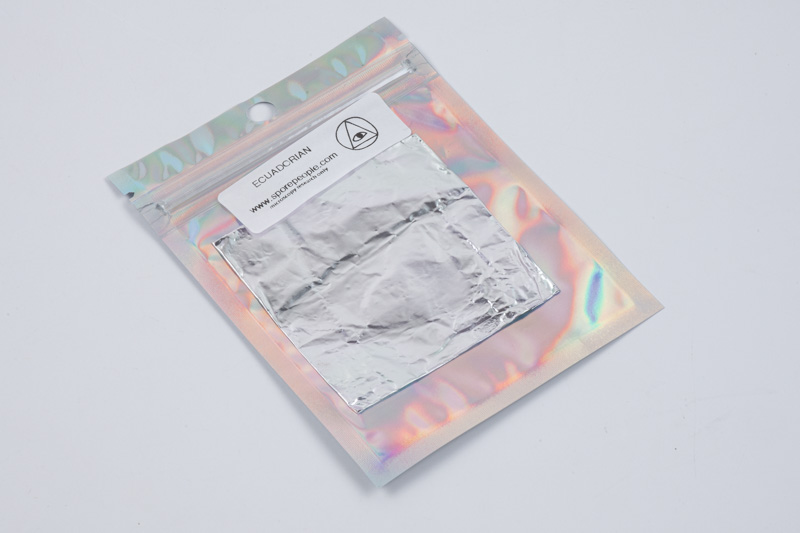In the world of mycology, maintaining a sterile environment is non-negotiable. Contamination from bacteria, mold spores, and viruses can destroy weeks of cultivation efforts in a matter of hours. One of the most powerful tools in the fight against contamination is UV-C light sterilization—a method proven effective in both clinical settings and mushroom labs around the globe.
What Is UV-C Light and How Does It Work?
UV-C refers to ultraviolet light in the 200-280 nanometer range, with 254 nanometers being the most effective wavelength for microbial destruction. This high-energy light penetrates cell walls and damages the DNA and RNA of bacteria, fungi, and viruses—rendering them nonfunctional and unable to reproduce.
When used correctly, UV-C light can sterilize:
- Smooth lab surfaces (plastic, glass, stainless steel)
- Cleanroom walls and benches
- Equipment exteriors
- Aluminum foil sheets for spore printing
For mycologists, this level of sterilization offers a massive boost in reducing contamination—especially when working with nutrient-rich media like agar and grain spawn that naturally attract mold such as Trichoderma.

UV-C Light for Grow Rooms and Still Air Boxes
A 15-minute UV-C session in a 10×10 grow space can reduce contaminants by more than 99%. Larger or oddly shaped rooms may require longer exposure, especially in areas where shadows limit light coverage. The intensity and size of the UV-C bulb matter—stronger lamps will reduce the necessary exposure time.
Whether you’re using a laminar flow hood or a still air box, UV-C light can increase your success rate tenfold. Here’s how:
- Still Air Boxes: Since they don’t rely on HEPA filters, pre-sterilizing your box with UV-C gives you a strong head start.
- Laminar Flow Hoods: UV-C light can be used in conjunction with HEPA filtration. Replace pre-filters monthly and HEPA filters every 5–10 years for best results.
⚠️ Important Safety Note: Never expose your skin or eyes to active UV-C light. Prolonged exposure can cause burns and increases the risk of cancer. Always leave the room during sterilization.
Sterilizing Tools and Supplies
While UV-C is excellent for surfaces, it is not effective for internal sterilization of tools. For scalpels, tweezers, syringe caps, and scissors:
- Use a pressure cooker at 15 psi for 45 minutes
- Store tools in dental pouches for easy retrieval and sterile handling
- Use UV-C storage boxes (like PhoneSoap) for quick surface decontamination between tasks
UV-C chambers offer a great in-between solution, especially for tools placed near your hood for fast access. Place scalpels, syringe caps, and foil packets into a UV-C device for 5–10 minutes of irradiation before use.
UV-C Sterilization for Spore Prints and Mushroom Caps
Many mycologists wonder whether they can use UV-C light directly on mushroom fruits or spore prints. The answer is yes—but with caution.
- Spore Prints: Lightly exposing aluminum foil (with or without spores) to UV-C will reduce surface bacteria, especially if it’s been stored or handled in less-than-sterile conditions.
- Mushroom Caps: If you’re working with tissue cultures, surface UV-C exposure can help kill surface mold. However, excessive UV-C can damage spore DNA and reduce their viability. This can lead to mutations or poor growth in multispore inoculations.
When working with rare genetics or wild specimens, it’s best to rely on tissue transfers under a flow hood rather than overexposing caps to UV-C.
Does UV-C Replace Alcohol or Other Disinfectants?
Not entirely. UV-C sterilizes what it touches, but does not clean up spills or remove oils. For tools and surfaces:
- Use 70% isopropyl alcohol (not 90%) for physical wiping. The water content helps break down microbial cell walls before the alcohol dehydrates and destroys the cells.
- Wait at least 30 seconds after spraying before working—contact time is essential for proper disinfection.
- Follow up with UV-C exposure for added sterilization if the surface is dry and safe to irradiate.
Preventing Contamination in Spore Prints
Even mushrooms grown indoors can carry bacterial spores. Once a spore print is collected onto foil, that surface can harbor bacteria. To reduce this risk:
- Dry spore prints in front of a flow hood
- Fold prints into double-layered aluminum packets
- Store in a clean fridge (mid-30s °F). Freezing spores can rupture them
- Optionally expose to UV-C light one last time before shipping or inoculation

UV-C for Long-Term Spore Storage and Shipping
If you’re sending spore prints or cultures through the mail, UV-C adds another layer of reliability:
- Folded foil prints in dual-layer cases
- UV-C exposure before shipping
- All products kept sealed until opened by the cultivator
This method drastically reduces the chance of introducing bacteria or mold during transport.
Final Thoughts: Add UV-C to Your Mycology Toolkit
UV-C sterilization is no longer exclusive to hospitals and high-end labs. Affordable UV-C wands, lamps, and chambers are now available for home mushroom cultivators, offering one of the most effective and science-backed sterilization methods in modern mycology.
While UV-C won’t replace pressure cookers or alcohol, it will enhance your sterile workflow, reduce contamination, and help you produce cleaner, more consistent results. Whether you’re working with spores, agar, grain, or grow kits, UV-C light can make all the difference.

